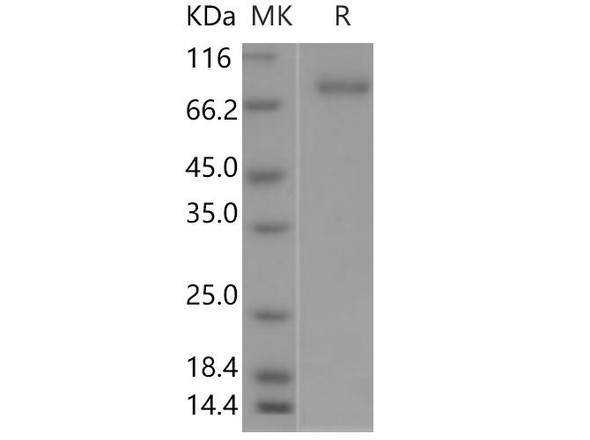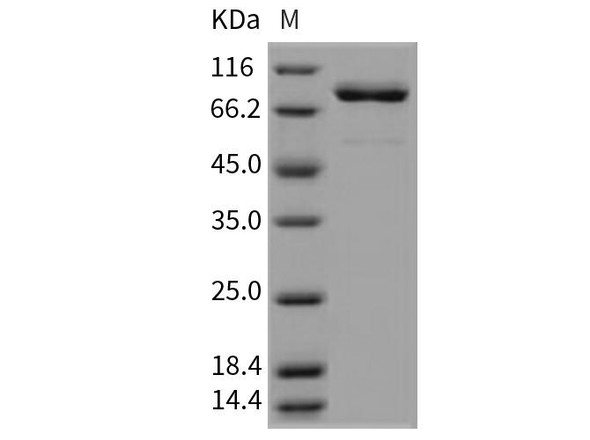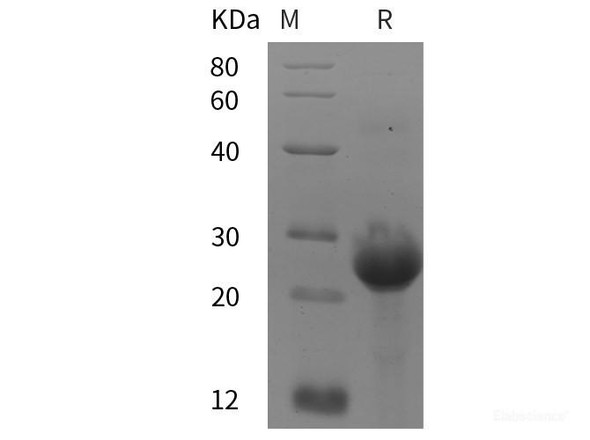Human SRC/Proto-oncogene c-Src Recombinant Protein (His Tag) (RPES6187)
- SKU:
- RPES6187
- Product Type:
- Recombinant Protein
- Species:
- Human
Frequently bought together:
Description
| Product Name: | Human SRC/Proto-oncogene c-Src Recombinant Protein (His Tag) |
| Product Code: | RPES6187 |
| Size: | 20µg |
| Species: | Human |
| Expression Host: | E.coli |
| Synonyms: | Proto-oncogene tyrosine-protein kinase Src, Proto-oncogene c-Src, pp60c-src, p60-Src, SRC1 |
| Application: | Immunogen |
| Mol Mass: | 31.2 kDa |
| AP Mol Mass: | 33.39 kDa |
| Tag: | N-His |
| Purity: | > 90 % as determined by reducing SDS-PAGE. |
| Endotoxin Level: | Please contact us for more information. |
| Bio Activity: | Testing in progress |
| Sequence: | Gly2-Gly287 |
| Accession: | P12931-1 |
| Storage: | Generally, lyophilized proteins are stable for up to 12 months when stored at -20 to -80°C. Reconstituted protein solution can be stored at 4-8°C for 2-7 days. Aliquots of reconstituted samples are stable at < -20°C for 3 months. |
| Shipping: | This product is provided as lyophilized powder which is shipped with ice packs. |
| Formulation: | Lyophilized from sterile PBS, pH 7.4. Normally 5 % - 8 % trehalose, mannitol and 0.01% Tween80 are added as protectants before lyophilization. Please refer to the specific buffer information in the printed manual. |
| Reconstitution: | Please refer to the printed manual for detailed information. |
| Background: | Proto-oncogene tyrosine-protein kinase SRC is a hydrophobic protein belonging to the SRC family kinase including nine members that is a family of non-receptor tyrosine kinases. SRC protein may exist in different forms: C-SRC and V-SRC. C-SRC is only activated under certain circumstances where it is required such as growth factor signaling, while V-SRC is constitutively active as opposed to normal SRC (C-SRC). Thus, V-SRC is an instructive example of an oncogene protein kinase whereas C-SRC is a proto-oncogene protein kinase. Inhibition of SRC with NR2A tyrosine phosphorylation mediated by PSD-95 may contribute to the lithium-induced downregulation of NMDA receptor function and provide neuroprotection against excitotoxicity. |










